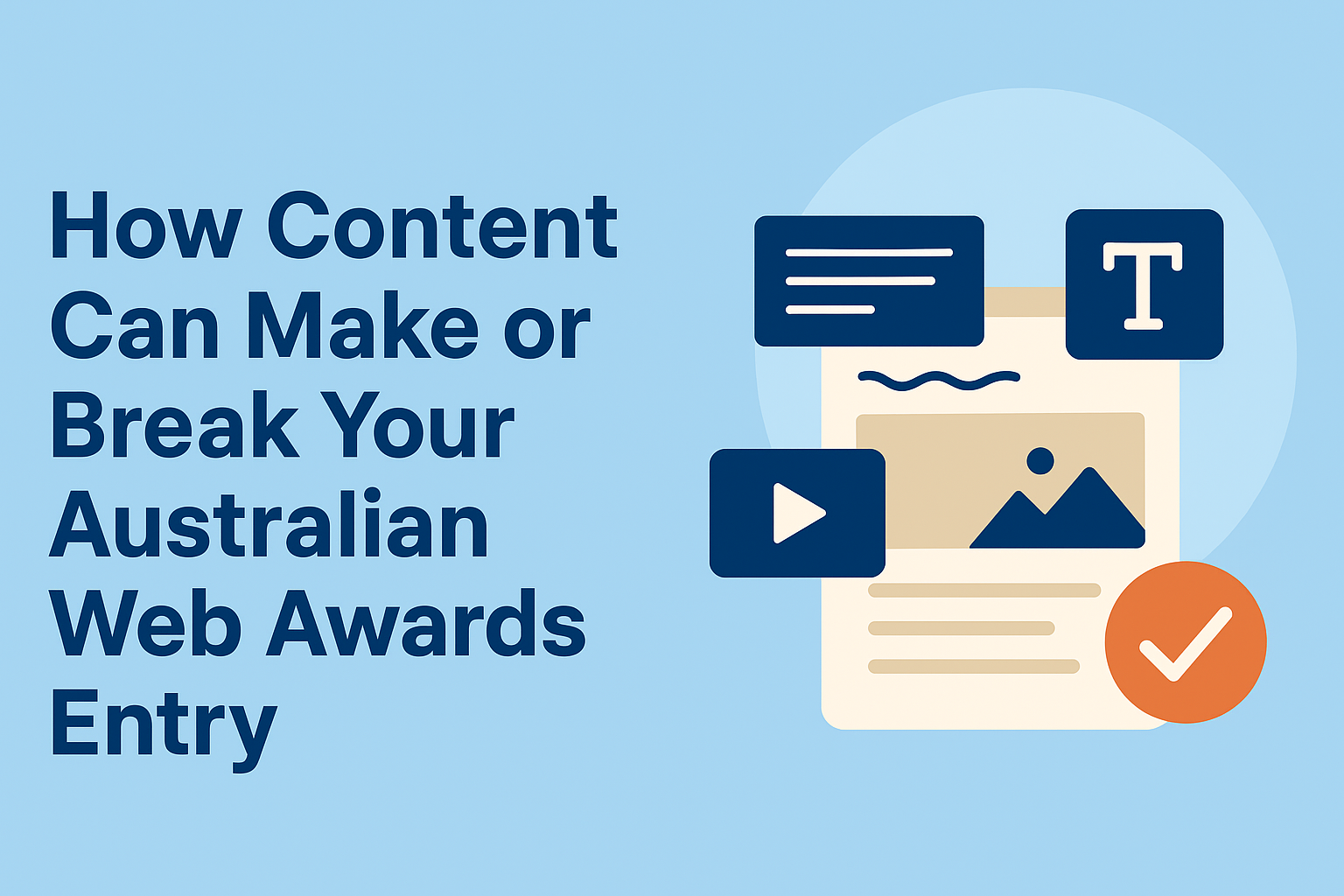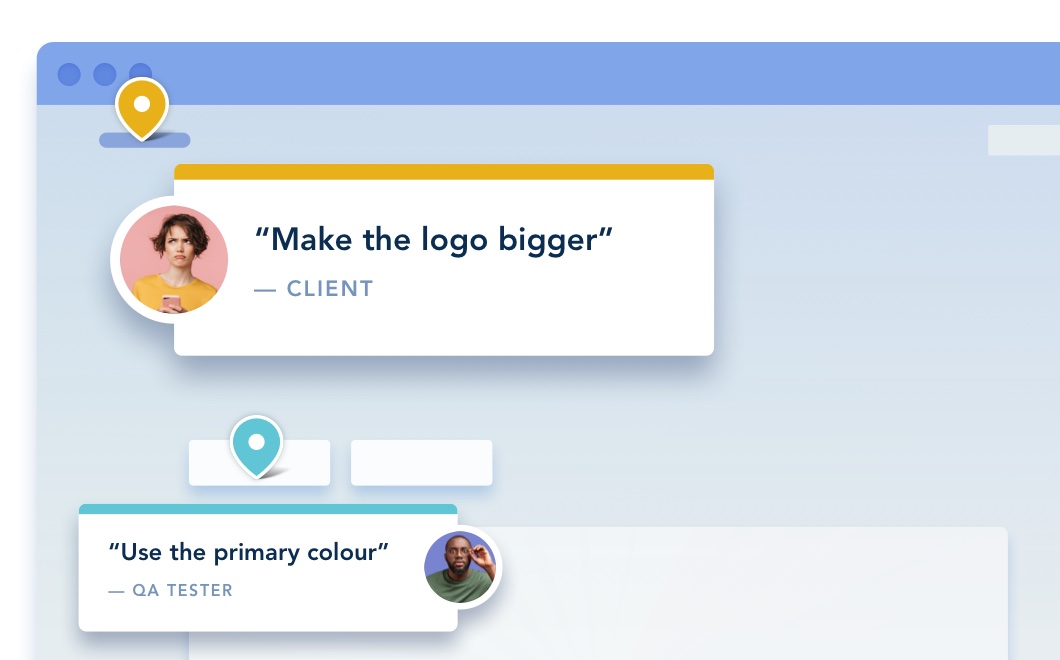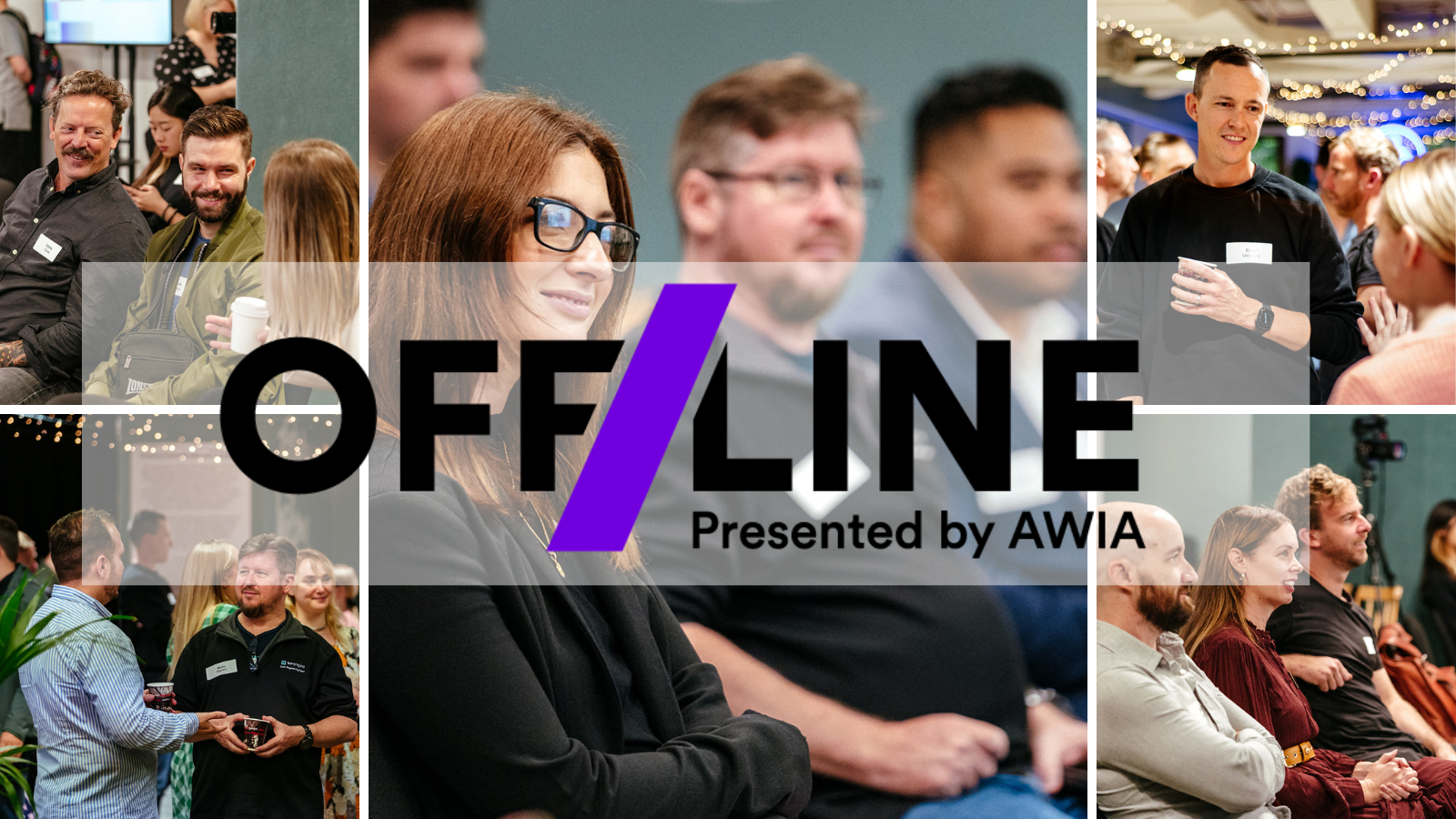How Content Can Make or Break Your Australian Web Awards Entry

As one of the most important components of anything online, content influences so many factors in our digital experiences. From deciding what to buy, to finding answers to our questions, to even doing tasks at work.
When content is seamless, on brand and accessible, there’s little to no friction and we can find what we need. On the flip side, when content is inconsistent or hard to digest, it may cause deep frustration and even have dire legal implications.
In this article, we unpack what our Australian Web Awards (AWA) judges look for in the content discipline to help you craft better online content and improve your chances at the next awards.
What is ‘content’?
As a broad catch-all category, content refers to any information that’s created, disseminated or stored digitally. Think text, images, audio and videos, across numerous media formats, like websites, social media, email, software, podcasts and more.
What do AWA content judges look for?
When it comes to content, our judging criteria has specific markers for assessing entries. Redback Solutions Managing Director, Dave Eddy, has judged in the content discipline – and his team won for Best in Show: Content in 2025 – championing how important content is for the overall success of a project.
"We've always found content to be a make-or-break factor in the success of our clients' websites,” Dave explains. “Because (unlike the design and development aspects) we rarely have full control over what content goes into a site.”
“There's nothing worse than delivering amazing design prototypes, developed into a fantastic functional staging site… only for the client to provide finalised content that is a bit ‘meh’, ruining the end result."
Good content is more than the sum of its parts, so here are three key points to nail if you want your digital products to stand out for the right reasons.
1. Clear navigation
Being able to find the information you need to make a decision or complete an action is vital to a good digital experience. Our judges consistently report that the highest scoring entries in the content discipline are well-structured, informative and clearly guide the user through a journey.
2. Digestible information
Clear navigation will only get a user so far – the information also needs to be digestible and easy to access. This applies to text as much as visual information, which could look like:
Using Plain English principles to write clearly with less jargon and complicated sentences, organised in a way that makes sense to the reader
Videos and information have appropriate alt text and/or transcripts, and
Infographics or icons are used to signpost information or simplify processes or abstract concepts.
Taking the time to use a combination of different content types can make information more digestible and also more engaging for the user.
3. Strong storytelling and messaging
As the foundation for building a memorable brand, storytelling and messaging have the capacity to deliver powerful ideas in unique ways. They can also support and shape your brand’s authority and help to build trust when backed by a good customer journey.
Our judges have noted that many entries fall short when messaging is unclear or inconsistent. The highest scoring entries seamlessly layer their brand’s tone of voice, distinct visuals and key messaging onto well-thought out and structured information.
If you don’t have the in-house skills to develop and refine your brand’s message and story, consider partnering with an expert in the space. Explore our members directory to find your next digital partner.
5 ways to improve your content score in the Australian Web Awards
1. Keep the end user front and centre
Remember that your website might be about you, but it’s not necessarily for you. Creating content that not only fulfills user needs and solves their problems, but also is compelling and easy to read, can put your awards entry ahead of the pack.
Digital NSW offers three questions to keep in mind when you’re writing for the web:
Who are you talking to?
What do they care about?
What do you want them to know/do/feel?
By asking these kinds of questions from day one, along with web accessibility, you can craft better digital experiences for everyone.
2. Learn and implement the Web Content Accessibility Guidelines (WCAG) 2.1
These guidelines are the internationally recognised standard for content and offer a straightforward way to create accessible digital experiences. Becoming familiar with these guidelines – and implementing them, particularly on government websites as its mandatory – is good best practice.
As with many sites, though, the level of effort in presentation and identifying user needs drops off after the good first impression.
3. Refine content process internally and with clients
How content is produced is just as important as the end result. Dave Eddy and his team realised this and have taken steps to address it.
"In recent times, we've worked hard to develop stronger processes around [content],” he shares. “Collaborating with our clients to help ensure that their content is relevant, optimised, unique, diverse and interesting.”
“Generative AI tools are becoming more and more helpful, but it is still critical that our team takes the time up-front to truly understand a clients' brand, their objectives, and their market.”
4. Embrace dynamic content
Did you know around 70% of consumers expect brands to deliver personalisation? Using dynamic content relies on collecting good data from your customers to serve up content that changes based on behaviour, location or preferences. Emails, web banners and related products are examples of dynamic content and while very common nowadays, they’re often not utilised in the right way.
Our award judges report that static content often lets down a website or app because it misses opportunities to guide the user’s next action. Whether that’s exploring related topics, downloading resources or subscribing for specific updates.
5. Be consistent
From headings that don't stick to a hierarchy, to using both sentence and title case in a blog post, there’s inconsistencies in text that can undo other good work in content. Award-winning entries in the Australian Web Awards pay attention to the details and stay consistent. It may be obvious in text, but it also applies to imagery, too.
Better digital content starts on day one
Don’t leave your content til last and try to retrofit it into design or development. When built in tandem with design and UX, mapped to the user’s journey, it can either skyrocket engagement or sink the entire experience.
Content is only one discipline in the Australian Web Awards, so take the time to brush up on how to enter and the judging criteria. We wish you the best of luck for your next entry!
The Australian Web Awards recognise excellence across six core disciplines: Accessibility, Content, Design, Development, SEO, and User Experience. Subscribe to AWIA’s newsletter for 2026 awards updates, AWIA news and accessibility events as they’re released.



